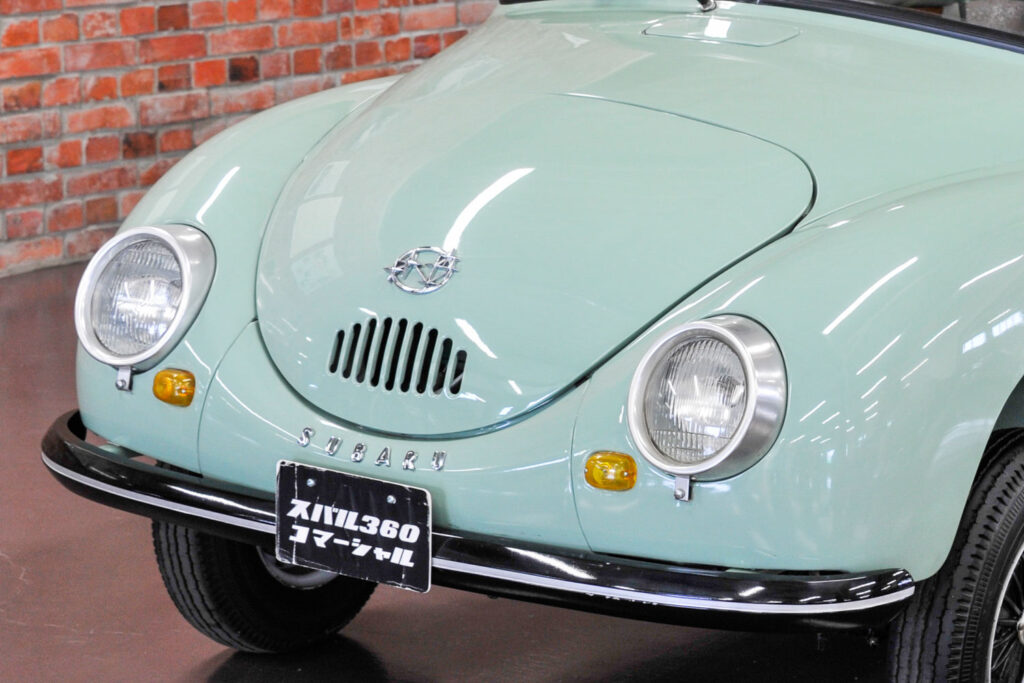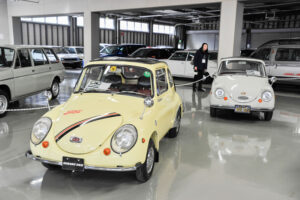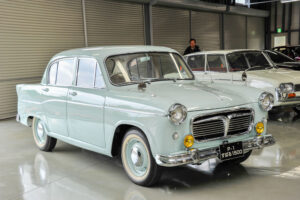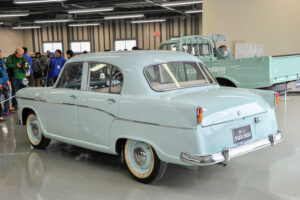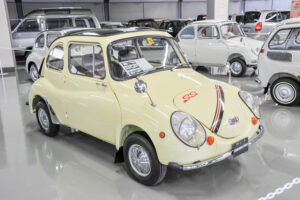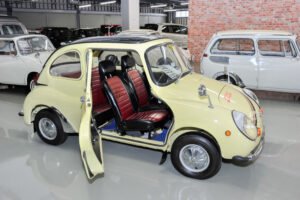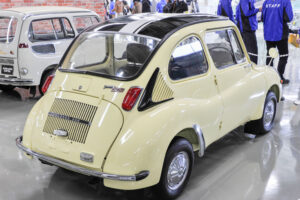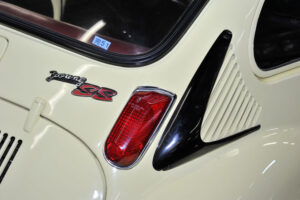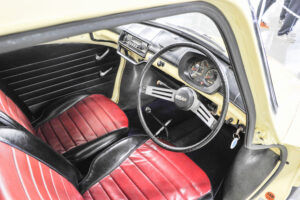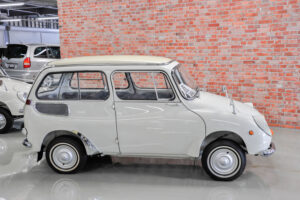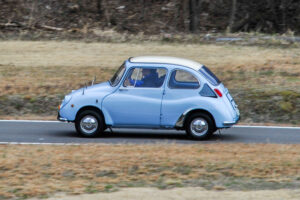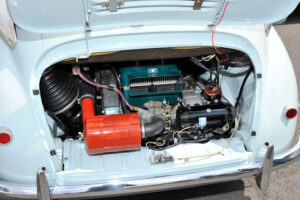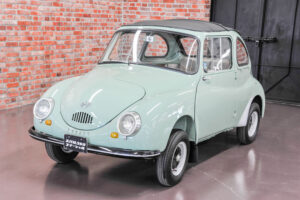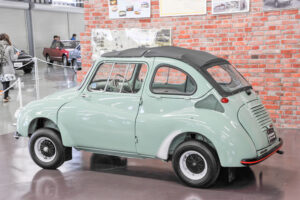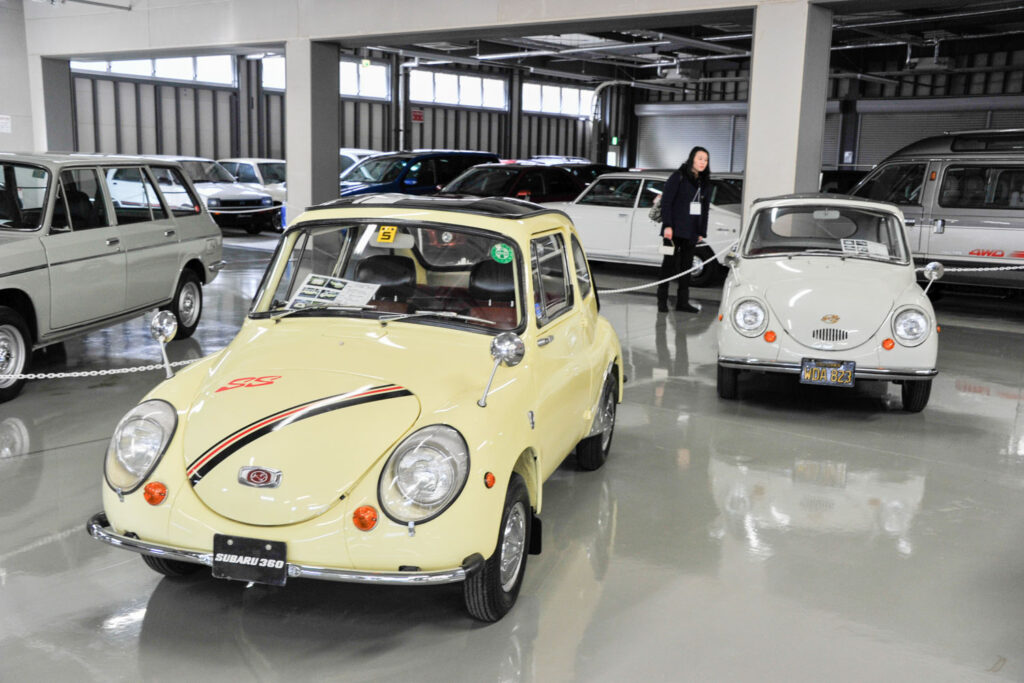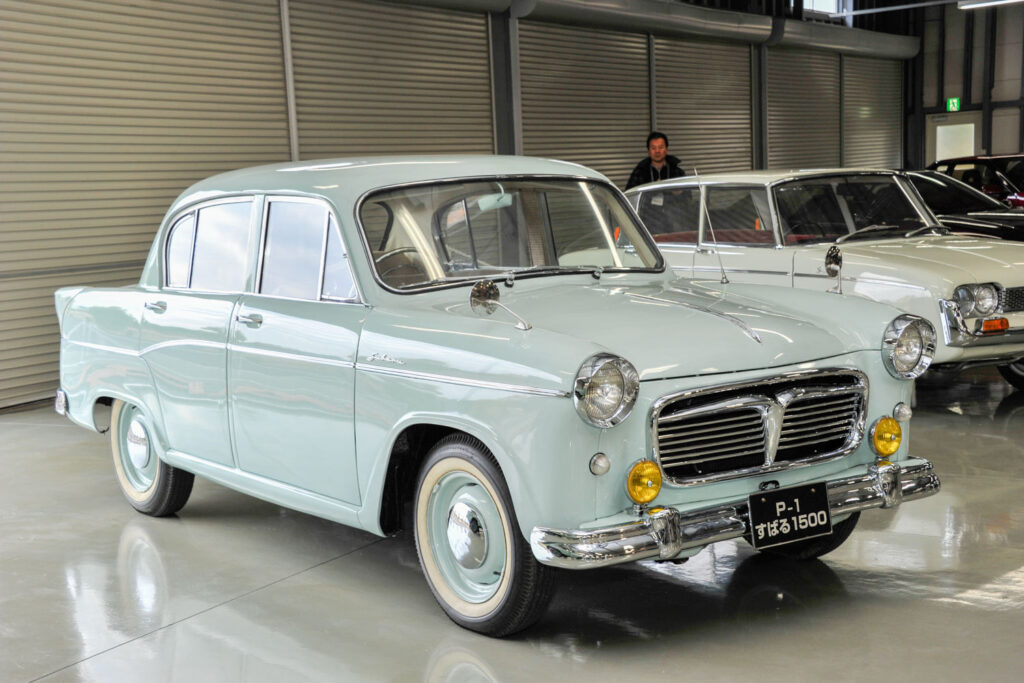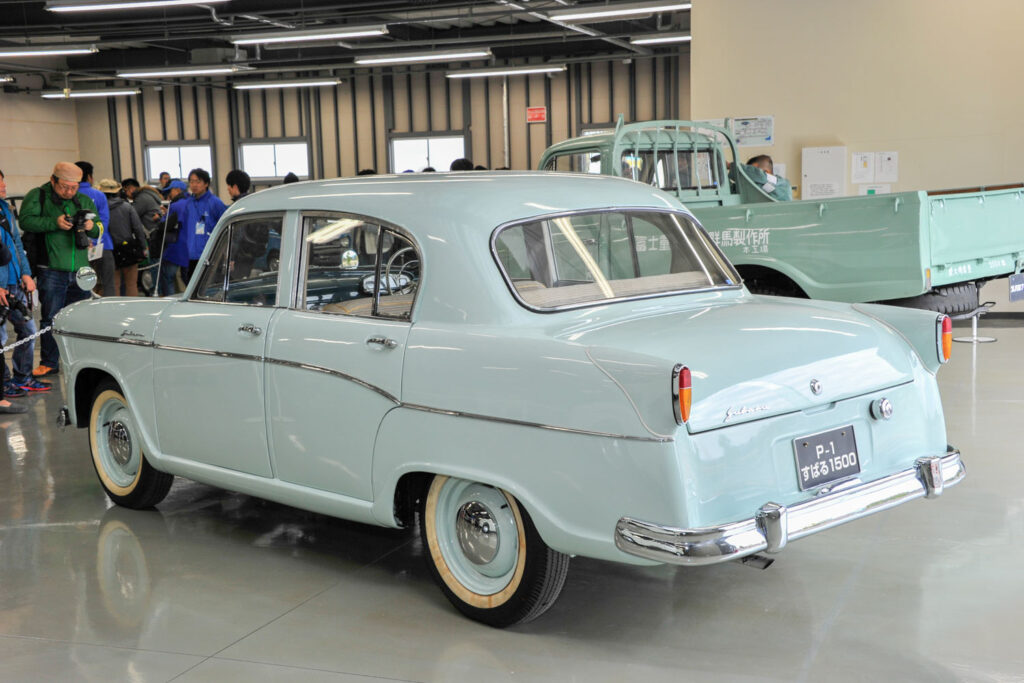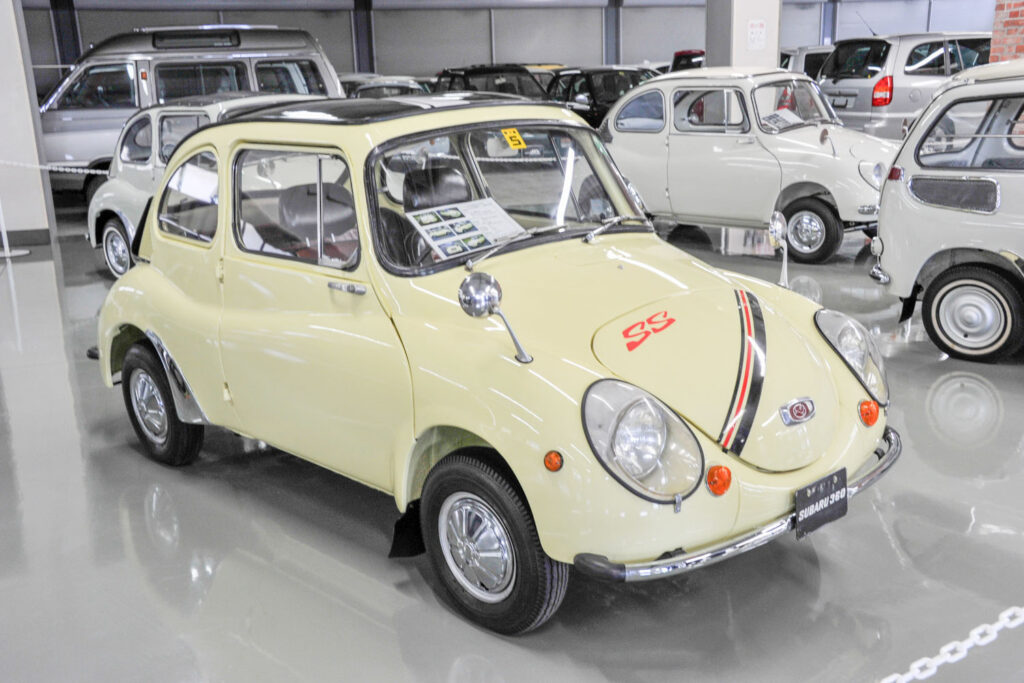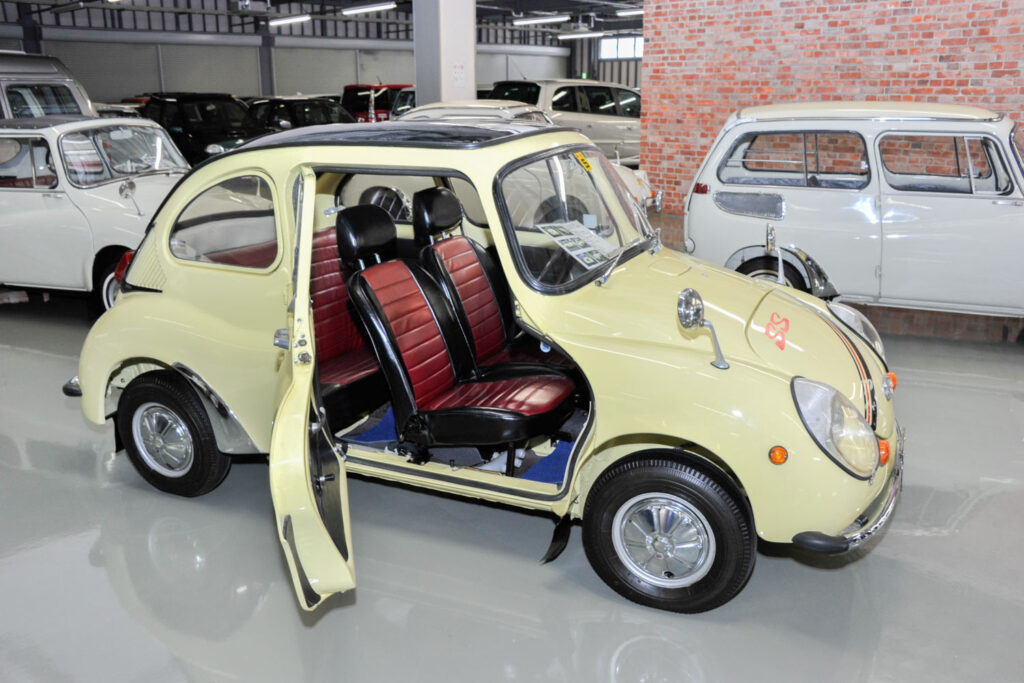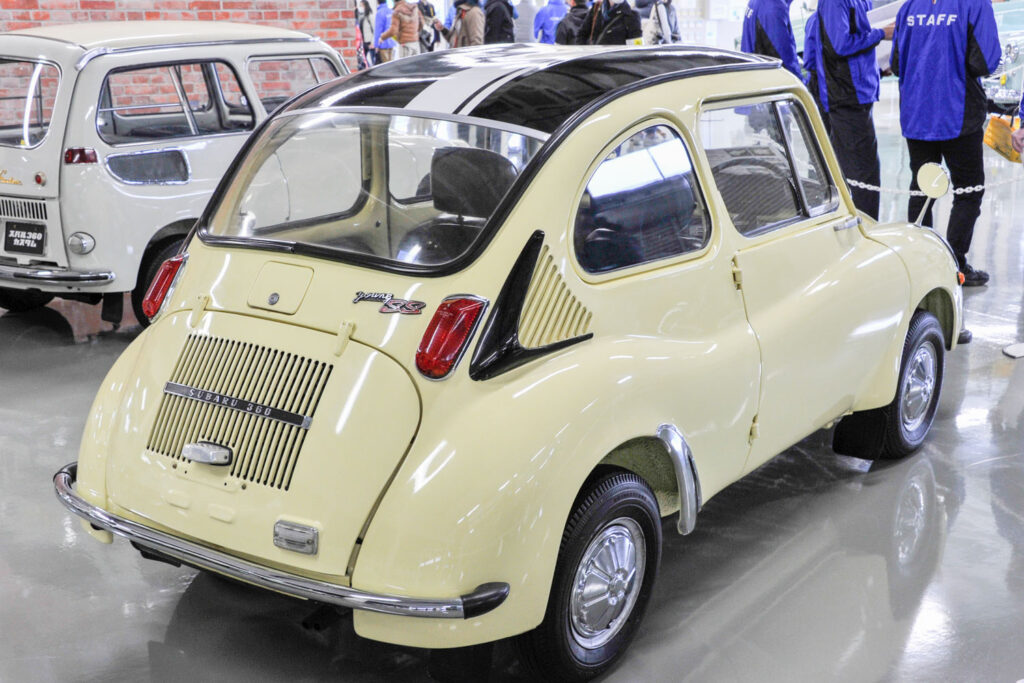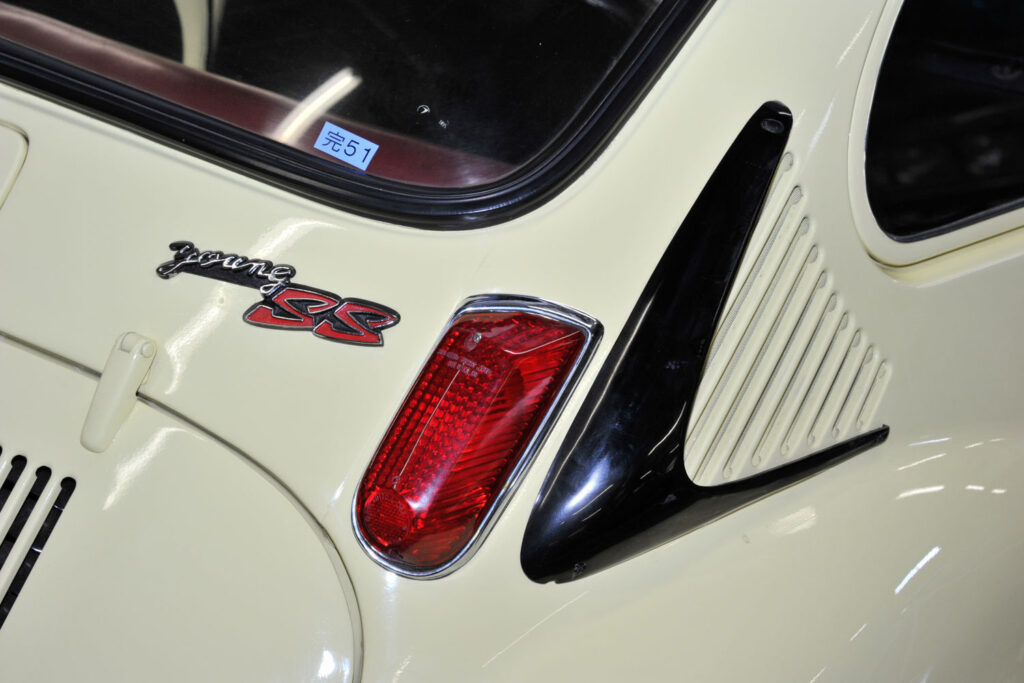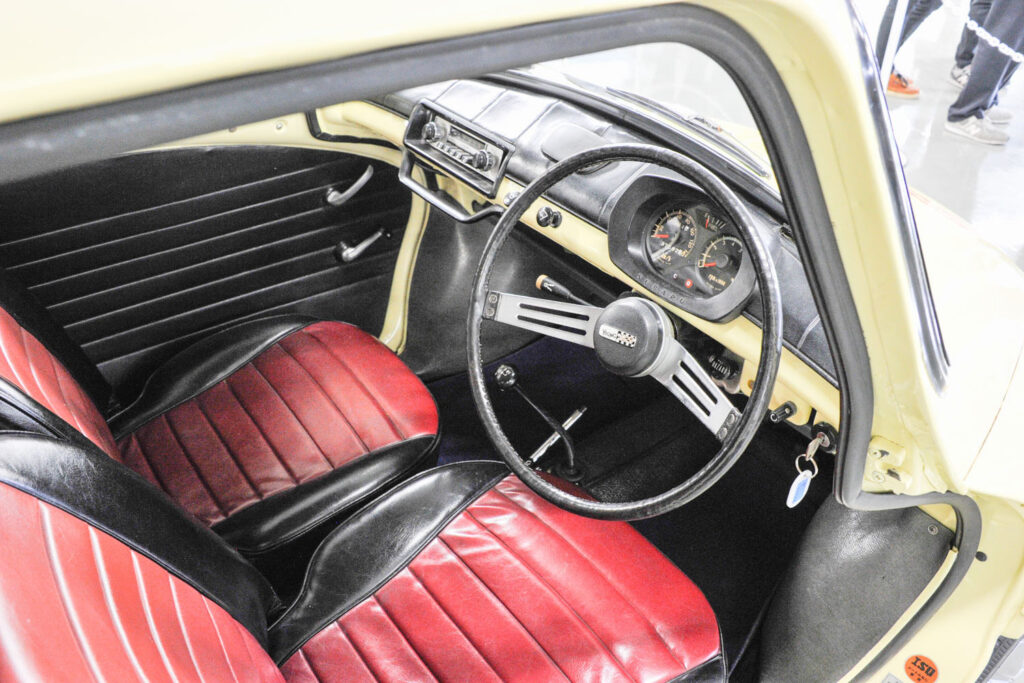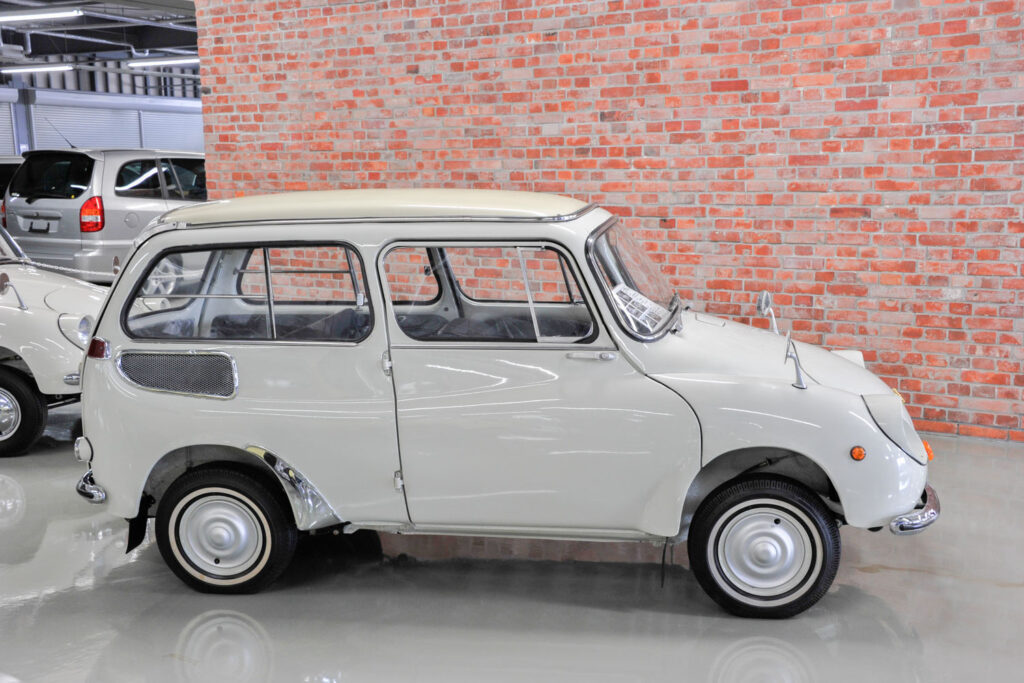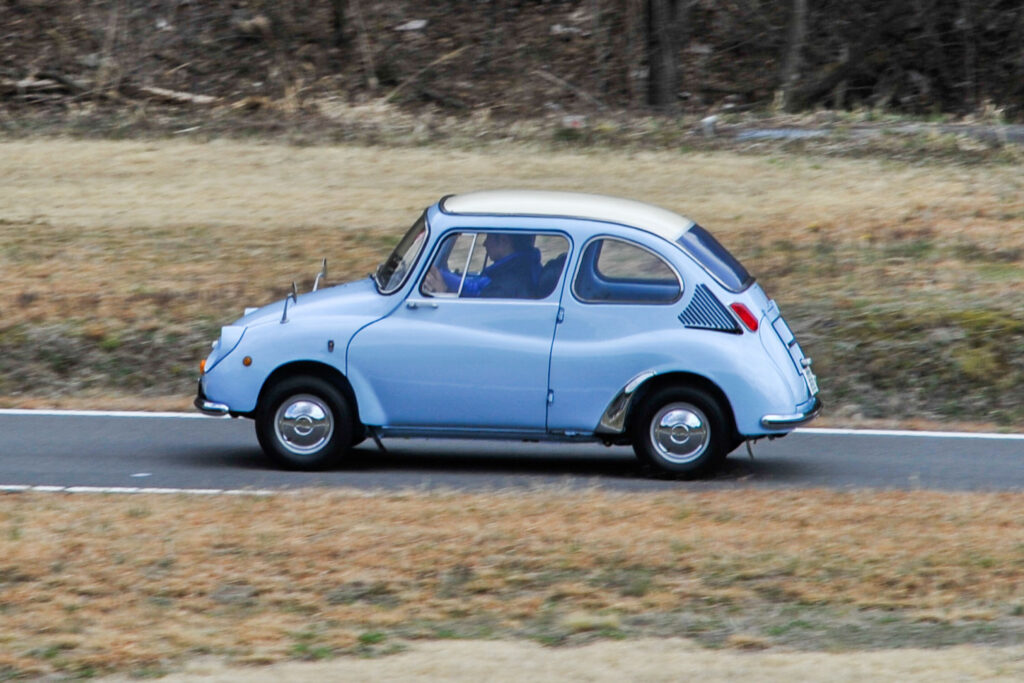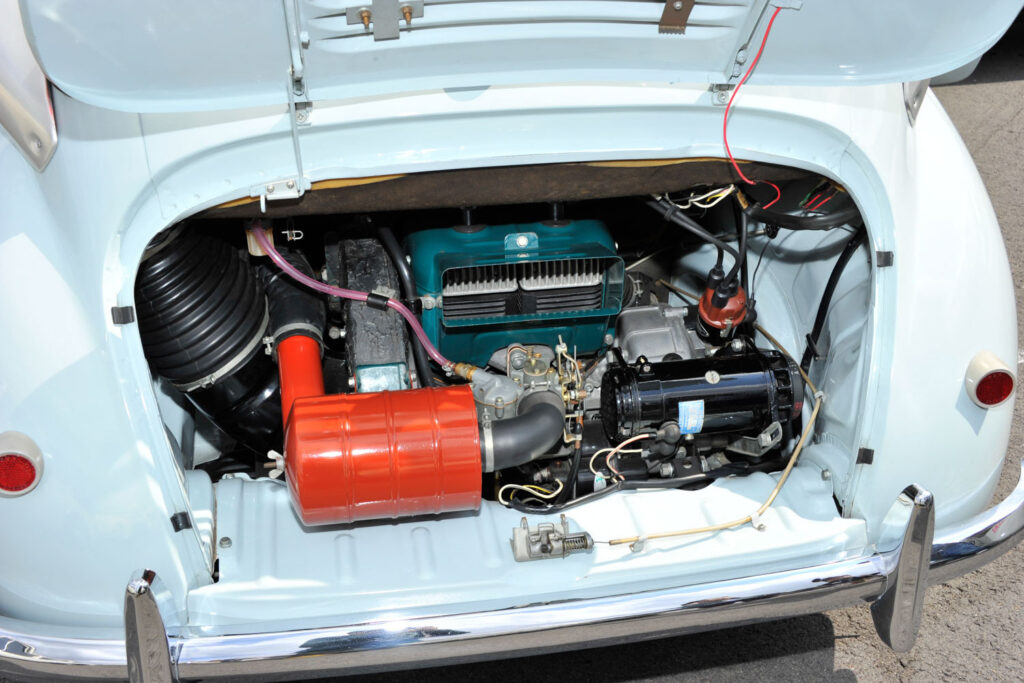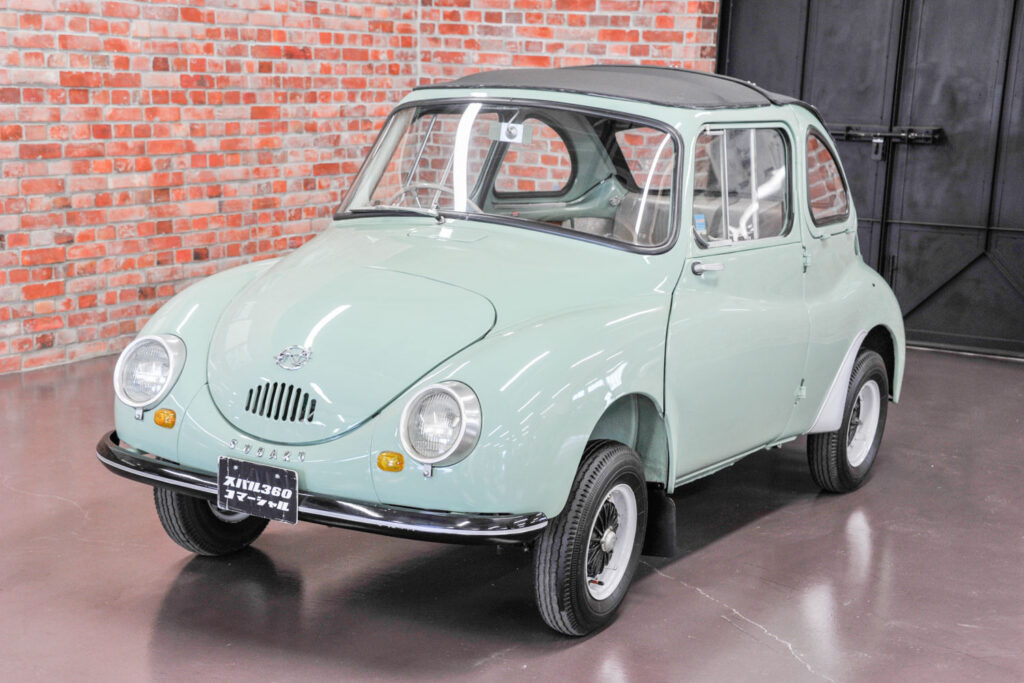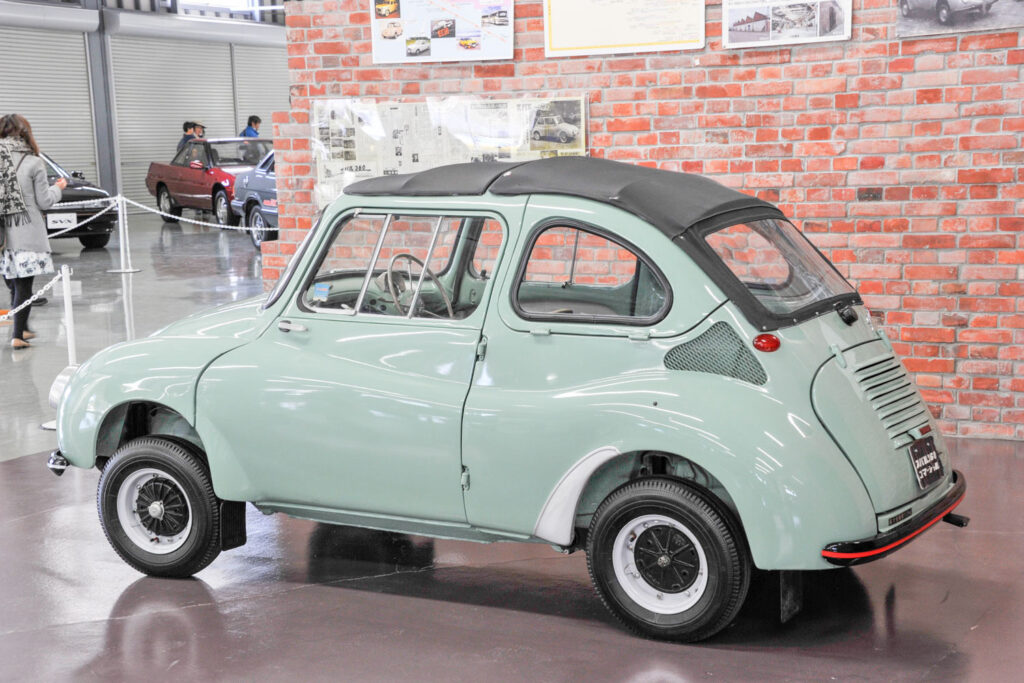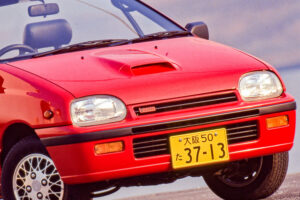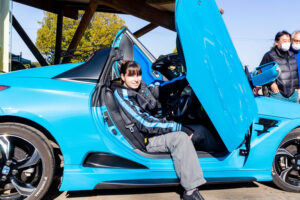Layout that accommodates four adults in a full length of 3 meters
The first car built by Subaru (formerly Fuji Heavy Industries) was the P-1, a 4-door sedan with a 1500cc engine, completed in 1955. This was the same year that Toyota’s Toyopet Crown (later Crown) was introduced. However, the P-1 was only partially used in cabs and other vehicles and was not mass-produced commercially. The car was named Subaru (the Pleiades) to symbolize Fuji Heavy Industries, which was created through a series of joint ventures among six companies.
Research and development of Interior
The engineers who were involved in the P-1 developed the Subaru 360 as the first mass-produced car. The leader of this project was Shinroku Momose, the same man who led the P-1 project.
The Subaru 360 has a unique style with no grille. It was also characterized by its rear-engine layout, with the engine mounted behind the passenger compartment. Another reason for the Subaru 360’s popularity was its interior space, which could seat four adults in a small space only 3 meters long and 1.3 meters wide, which was the standard for Kei-cars at the time.
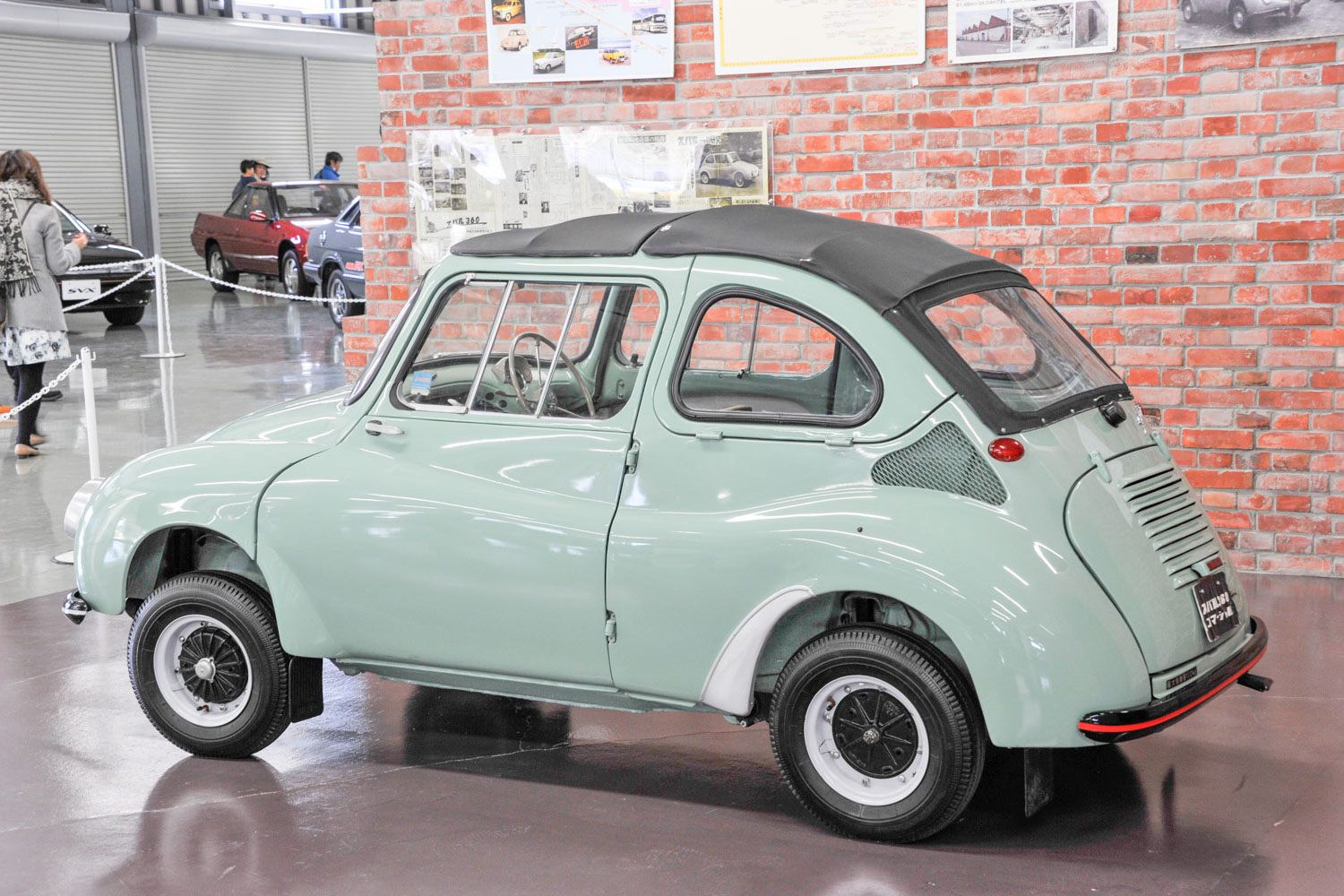
Momose first prepared four chairs on the floor and studied the interior space by arranging them side by side. The interior was spacious enough for long tall Momose to stretch his legs, and he created a space that could accommodate four adults. They then made a wooden model and sculpted the exterior. In this way, the rounded body of the Subaru 360 was created.
Development methods inherited from Nakajima Aircraft
This development approach was based on the human-centered concept inherited from Nakajima Aircraft, the predecessor of Fuji Heavy Industries. The human-centered approach was applied not only to the interior, but also to driving performance. Once an aircraft takes to the sky, it must protect the lives of its occupants until it lands. Unlike cars that run on the ground, airplanes are vehicles with a much higher level of reliability when it comes to safety.
This philosophy was the reason why the Subaru 360 was sold for 12 years from 1958 to 1970. The development of the Subaru 360 was likely based on a long-term perspective.
Easy to use even for women
At that time, my father went golfing with his co-worker in a Subaru 360. I wondered how four adults could go to golf with such a small car. But when I learned about Momose’s approach to making cars, I was convinced.
There was also an elementary school teacher who drove a Subaru 360 to work. The Subaru 360, which was easy for women to handle and had a stylish appearance, gained wide customers. This was probably one of the reasons why the Subaru 360 stayed on the market for 12 years.
Later, the Honda N360 appeared as a competitor. It was a Kei-car with a completely different approach than the Subaru 360, but it was a car with a particular style. In the early days of the automobile industry, companies made cars with originality and ingenuity.





